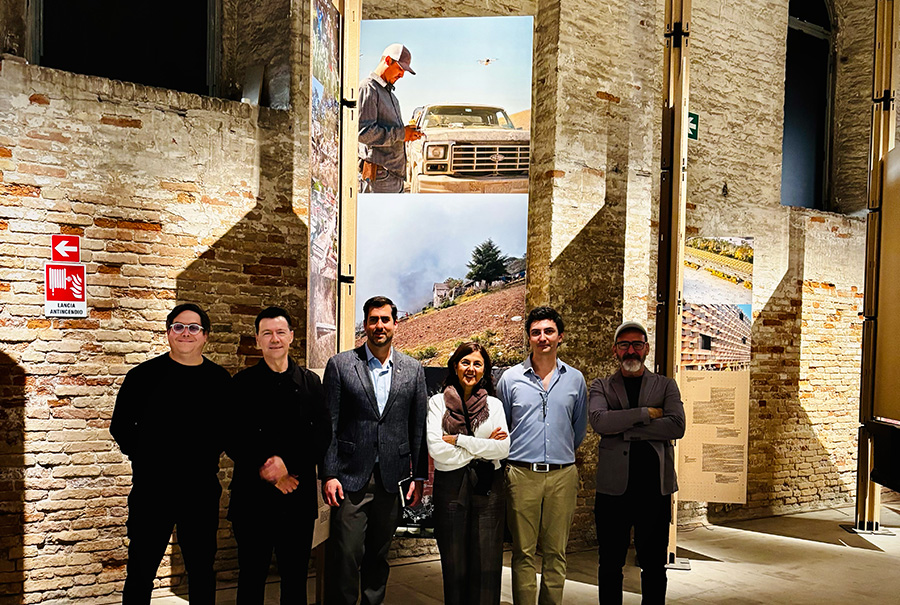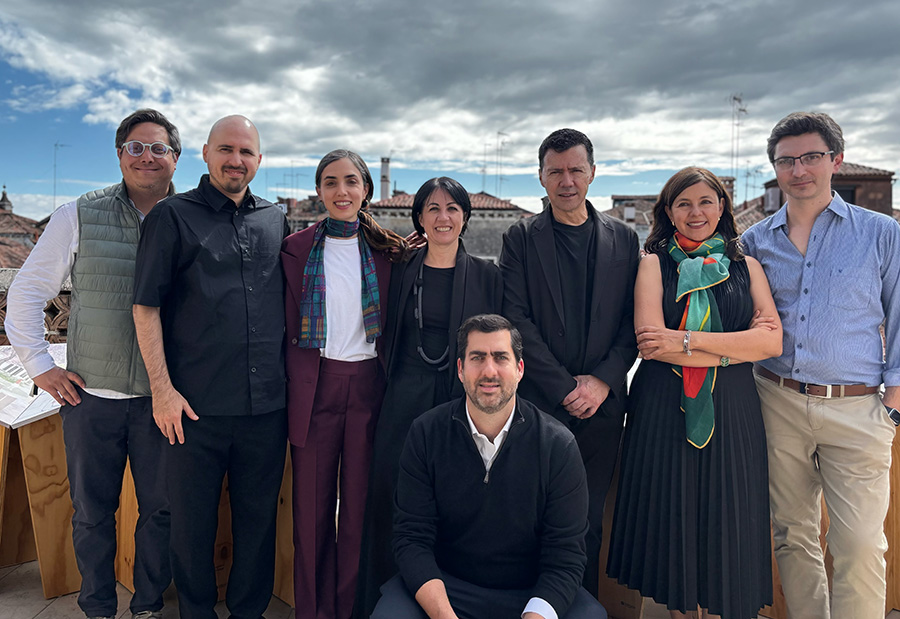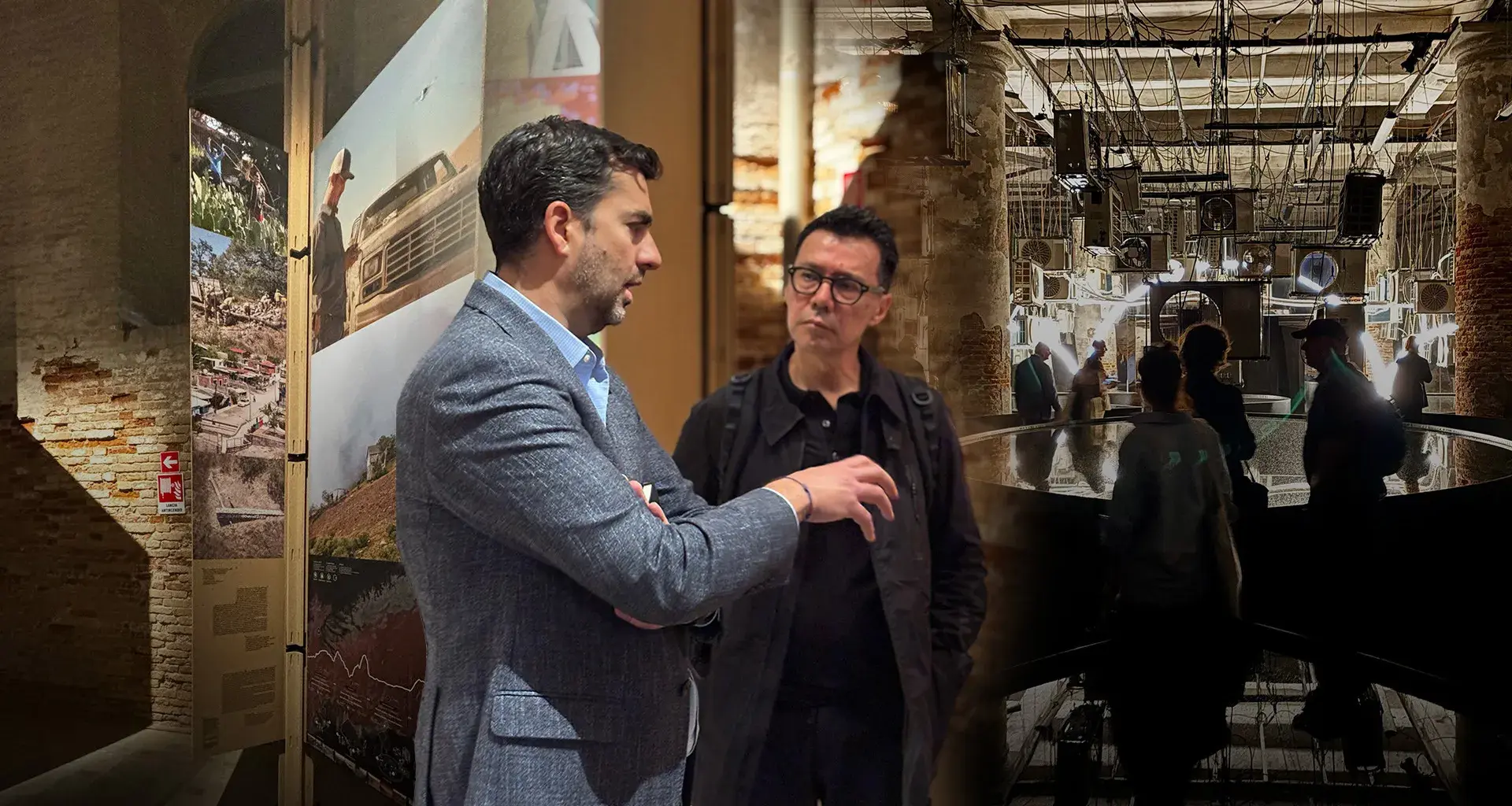Mexican professors from Tec de Monterrey have presented a sustainable architecture project entitled Fostering Care Ecologies: Tech-Community Driven Living Labs that shows their response to climate change at the 2025 Venice Biennale.
This project, which was presented in the Architecture section, consists of three living laboratories, that developed sustainable interventions in different parts of the country to address challenges such as water scarcity, connectivity, ecotourism, and environmental education.
María Elena de la Torre, Carlos Cobreros, and Emanuele Giorgi, professors from the School of Architecture, Art, and Design (EAAD), were responsible for presenting their proposals.

Tec community at the 2025 Venice Biennale
For the first time in the Venice Biennale’s 19-year history, Tec de Monterrey was invited to take part in its main exhibition in the Architecture section.
This living laboratory project was the only university initiative from Latin America presented this year.
Juan Pablo Murra, Rector of the Tec, was present at the pre-opening of the exhibition and spoke about the work of professors, students, and staff.
“Tecnológico de Monterrey is present at the Venice Biennale of Architecture to show the regenerative design proposals that are being developed in the territories of Jalisco, Querétaro, and Chihuahua.
“We’ve been working on this method with the inhabitants of these communities to generate designs that help them care for the environment by drawing on their knowledge and capacities while fostering funding models within them,” he said.
Alfredo Hidalgo, Interim National Dean of the EAAD, said that their participation aims to display Living Regenerative Laboratories, which highlights an interest in how architecture can become a response to climate change and social challenges.
“Today, the Biennale of Architecture has invited us to strike up a conversation to discuss how universities can be agents of change for the challenges of the coming years,” said Hidalgo.
The Tec’s proposal was one of 280 chosen out of over 750 proposals from around the world.
Living laboratories: Architecture as response to social challenges
Alfredo Hidalgo explained how the School of Architecture, Art, and Design took three living laboratories to the Venice Biennale that attempt to show architecture as a response to climate change.
Here’s what each laboratory consists of:
1. Design for vulnerable communities
Run by Emanuele Giorgi, National Director of Research at the EAAD, this project seeks to facilitate access to technologies and enable their appropriation.
It focuses on access to services, water, and sustainable agriculture, as well as entrepreneurship in ecotourism.

It has four hubs located in the communities of Paso del Norte, Nuevas Delicias, Julimes, and Basaseachi in Chihuahua’s Sierra Tarahumara.
“Being at the Venice Biennale of Architecture is an opportunity to show the work being done on regenerative design in Mexico.
“We’re working with communities and territories across the country, which has allowed us to think about how artificial, natural, social, and collective intelligences enable architectural design to evolve to answer the needs of contemporary society,” said Emanuele.
It is important to note that they developed five filters capable of eliminating arsenic and fluoride in Julimes, where they also installed rainwater harvesting and irrigation systems.
In Nueva Delicias, they installed two greenhouses to grow vegetables and solar-panel-based irrigation systems, implemented a composting system, and used drones to detect water leaks.
“Tec de Monterrey is present at the Venice Biennale of Architecture to show the regenerative design proposals (...) in the territories of Jalisco, Querétaro, and Chihuahua.” - Juan Pablo Murra
2. C+LAB
This project, led by research professor María Elena de la Torre, promotes actions to harmonize urban infrastructure with natural settings.
It is being implemented in the region of Bosque La Primavera, a Protected Natural Area where they present sanitation, restoration, and ecotourism solutions with an educational and sustainable perspective.
“In this space for innovation and technology, I’m proud to share the El Mirador project from student Pablo Pacheco, which was built in Bosque La Primavera in collaboration with the area’s environmental workers.
“The goal is to create a space to appreciate nature that fosters a better relationship between the forest and its community,” said the professor.
One example of what they have done is their work to rehabilitate Las Tortugas River, where nature-based interventions were made to mitigate the effects of pollution.
3. NatRural Lab
This laboratory is focused on the Sierra Gorda Biosphere Reserve in Querétaro, which represents 32% of the state.
“The Biennale covers a range of works that make interesting reflections, because architecture is understood as an opportunity for change that generates collaboration.
“For us, it’s an honor to be able to share our project and display all these innovations that are being developed in Mexico,” said research professor Carlos Cobreros.
This reserve is a Protected Natural Area with the most ecological diversity in the country, and the initiative consists of two hubs:
- Ejido de La Barranca: This seeks to preserve and regenerate the forest’s ecosystem through a model of conscious tourism, nature-based education, and responsible forest management.
- Tejamanil: This aims for society to take steps toward caring for and raising awareness of nature through ecotourism activities connected with the forest.
“Our participation aims to show the proposals from our Living Regenerative Laboratories.” - Alfredo Hidalgo, Interim National Dean of the EAAD
About the Venice Biennale of Architecture
The Venice Biennale of Architecture is one section of the Venice Biennale, which was created in 1980 to exhibit current proposals. Now in its 19th edition, it is being curated by Carlo Ratti.
One of the most important platforms in the world, it aims for exhibitors to offer tools for innovative practice in the international urban context.
The call for entries in this edition of the Biennale of Architecture featured not only an openness to participation by new actors but also an emphasis on inclusion and generating change.
Under the heading of Intelligens. Natural. Artificial. Collective, the 2025 Biennale seeks to explore the role of different forms of intelligence, from artificial intelligence to community knowledge, in transforming the built environment.
ALSO READ:





